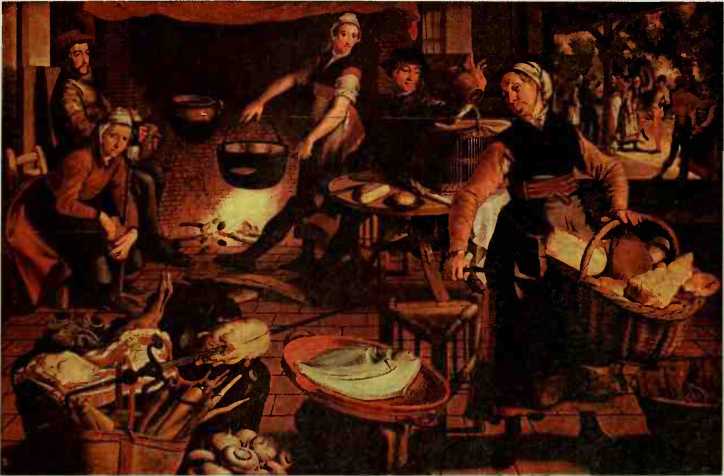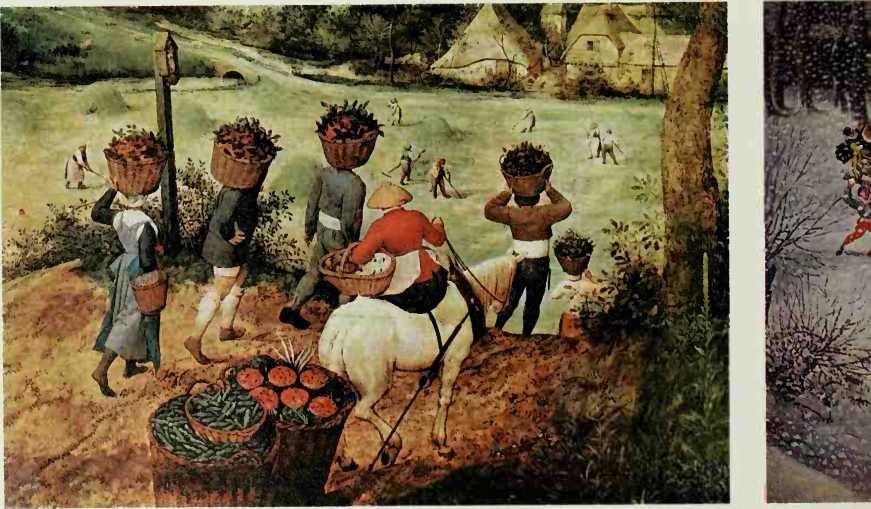Living in the shadow of a manor house or castle, many a peasant of the Reformation labored not only to sustain himself and his dependents but also to meet the demands of his lord. It was a hard life. The peasant's cottage—built of timber, clay and rubble with a roof of thatch and a floor of earth—was dim, dirty and, in winter, bitterly cold. Back of the cottage was a small garden plot, and sometimes a chicken coop, pigsty or cowshed; backyard produce was needed to supplement the often meager harvest.
Before he could feed his own family, the peasant paid two masters. To the Church went a "great
Tithe," or tenth, of his grain, another tithe of fruit and vegetables, a third tithe of livestock. To his lord, he twice a year yielded up a fixed percentage of all he produced as rent for his land. Even more irksome was the time exacted for personal service on the lord's domain—in some parts of Germany, 60 days. These days, often falling when the peasant most needed the time for his own crops, were spent doing anything the master ordained—including beating the bushes for the noble pastime of the hunt. "We have to run after the game all day without food or drink," one peasant protest declared, "and we get our pay in curses and kicks."

A BUSTLING KITCHEN, more pro.'ifX’roKS (/urn most, hrims with fooiJ fora hardiest holiday in this fiainting by Pieter Aertsen. In winter, the whole family often slept around the fire in this one room.
A COASTAL VILLAGE Weathers a winter storm in Brueghel's "Dark Day" (left). Aloof from this cluster of crude buildings—including a tavern (foreground) and a church—rises the lord's castle.

SPRING PLANTING of a lord's formal gardens, painted by Abel Crimer, is done by stooping peasants.

A SUMMER HARVEST is reaped and slowly carried, a basket at a time, from outlying fields to the village.




 World History
World History









